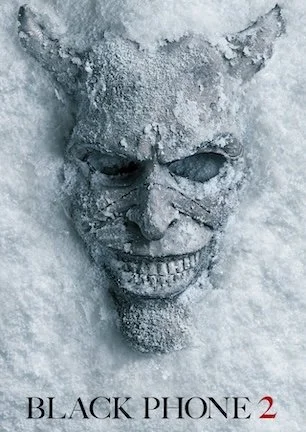Studio: Image Entertainment
Director: Olatunde Osunsanmi
Writer: John Swetnam
Producer: Marc Platt, Adam Siegel, Nik Mavinkurve, Michel Litvak, David Lancaster, Jeffrey Stott, Anthony Rhulen
Stars: Caitlin Stasey, Torrey DeVitto, Harry Lennix, Svetlana Metkina, Dale Dickey, Radha Mitchell, Stephen Moyer
Review Score:
Summary:
To identify a serial killer, detectives must comb through the video camera footage recovered from the scene of a mass murder.
Review:
Director Olatunde Osunsanmi took an inventive approach to “found footage” with his previous effort, “The Fourth Kind,” by juxtaposing the supposedly authentic video with actor reenactments of the exact same scenes. That style was unique and effective. It is a letdown then, that the recovered camera clips in “Evidence” are instead complimented with the framing sequence of a traditional film. Now the entire movie is able to weigh itself down with clichés from a conventional film as well as those from the “found footage” sub-genre.
Stephen Moyer is Reese. Reese is the type of stubble-faced detective on every Homicide department’s roster in the movies. Dedicated and overworked, a recent breakdown has forced Reese to take a leave of absence. But when a serial killer murders a busload of Vegas-bound passengers and sets fire to a remote auto repair shop, Detective Reese is the only one who can make sense of the footage recovered at the crime scene. Suspension be damned. Reese must solve this case and identify the killer.
Reese is also one of those movie problem solvers who is so much smarter than everyone else that he thinks too fast to ever stop and bring everyone else up to speed. His eyes widen at the clues that no one else can see and he feverishly follows leads on his own while the others scratch their heads and gaspingly ask, “what is it? What did you see?”
Reese’s job is to pour over the recordings made by a girl named Rachel. Rachel is someone who films everything because she is presumably an aspiring director, even though she cannot hold a palm camera steady or frame a shot to save her life. Rachel is making a mini-documentary about the rise to stardom of her actress friend Leann. With Leann’s recently jilted boyfriend Tyler along for the ride, the two girls board a bus pointed towards Las Vegas.
Although only three other passengers are aboard the bus, they are only an Elvis impersonator away from covering the most basic Vegas stereotypes. Steven is running away to become a magician’s apprentice. Vicki is a dancer looking to join Cirque du Soleil. Katrina has a duffel bag full of money, so her next stop may be a slot machine. Yet after driver Ben encounters a barbed wire road and overturns the bus, a rundown auto repair shop literally in the middle of the desert becomes their only refuge. And a masked man with a welding torch is none too pleased about the intrusion.
“Evidence” leaps over a few “found footage” hurdles and tries to justify its setup by making it a part of the story. When Detective Burquez asks to fast forward to the money shots, Reese interrupts to basically say, no no, let’s watch the boring stuff first because we need to understand everyone’s background. Much of the video was also corrupted by the subsequent fire, which explains the time jumps and missing scenes in the recordings. The audience is thus watching the footage in the same sequence as the police, as opposed to seeing an edited movie-ready version after the fact.
It is impossible to discuss anything more about “Evidence” or its plot holes without introducing spoilers. Suffice it to say, the story is not as clever as it thinks it is and it crumbles instantly when “refrigerator logic” is applied. For the uninitiated, “fridge logic” is Hitchcock’s term for when you are back at home after watching a movie, grabbing something from the refrigerator, and it suddenly dawns on you that the film does not quite make sense. Once all of the pieces are put together at the end of “Evidence,” it is an easy matter to look back at the full picture and realize that not everything adds up.
Writing tricks and genre contrivances can buy a film some leniency if they are employed for a worthwhile payoff. But the mystery of “Evidence” is not very suspenseful. The detectives are in a mad race to identify a masked killer, although it is never clear what the stakes are. Details are vague as to how many people survived, how many people died, and how many people were even involved in the first place. Why the police are so sure that the killer is either one of the bus passengers or is associated with one of them in some way is equally fuzzy. Without a reason to care, there is no reason to feel any tension, either.
There is even less of a reason to be interested in the framing sequence of detectives reviewing the footage, which is little more than one guy tapping a keyboard and mouse while the others stare at a monitor. Desperate to create a sense of suspense artificially, frantic music swells and the camera continually spins dizzily around the actors as they mutter, “c’mon” at a computer screen. But really, scenes of enhancing pixels in a digital image and listening to a detective shout, “stop, go back” come with a very limited capacity for excitement.
“Evidence” is not poorly made, but its delivery is weak. The premise is too wafer thin in the plausibility department and the wraparound segments fail to provide any lasting support. Some may find the final scenes mildly satisfying if they simply accept the film as routine entertainment. Although it is hard to imagine that many will feel “Evidence” presented itself well, even when “refrigerator logic” is overlooked.
Review Score: 50






Compelling performances keep “Hallow Road” swimming as strongly as possible against the strong current of a drowsy pace.